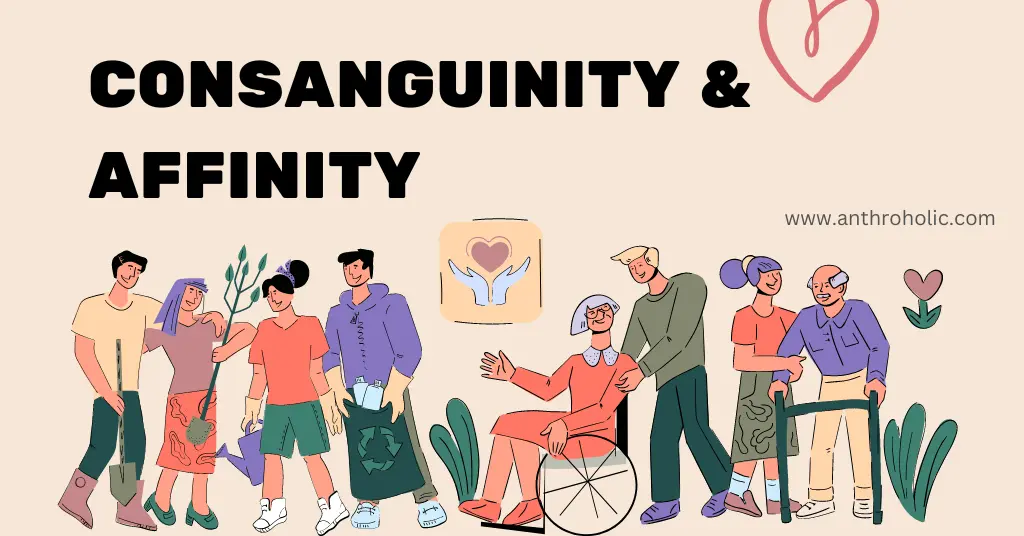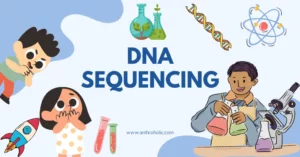AI Answer Evaluation Platform Live Now. Try Free Answer Evaluation Now
Consanguinity and Affinity
The fabric of human relationships is a fascinating tapestry, interwoven with two primary threads – Consanguinity and Affinity. Consanguinity refers to relationships formed by common ancestry, essentially biological or blood relations. On the other hand, Affinity denotes bonds forged through marriage or adoption, binding individuals in societal roles. Together, they contribute to the structure and dynamics of family units and societies across the world.

Historical Perspective
Consanguinity in History
Historically, consanguinity played a significant role in societies worldwide. Royal and noble families often endorsed consanguineous marriages, intending to preserve their lineage, wealth, and power within their bloodlines. This practice was not only confined to the Egyptian pharaohs or European royalty but found prevalence in various cultures around the globe (Bittles, 2001).
Affinity in History
Conversely, the historical concept of affinity was driven by socio-political strategies. Affinal relationships, formed through marriage alliances, were often utilized to foster diplomatic ties, settle disputes, or strengthen social bonds. In essence, marriage was considered a tool to link families, clans, or tribes, thereby creating a complex network of affinal relations (Godelier, 2011).
Legal Implications
Consanguinity and Law
Consanguinity has legal implications, primarily influencing laws regarding marriages, inheritances, and succession. While most societies prohibit marriages between close relatives, the degree of consanguinity considered acceptable varies. In some jurisdictions, marriages between first cousins are allowed, while others strictly prohibit such unions. These laws exist to prevent potential genetic risks associated with consanguineous marriages (Bittles & Black, 2010).
Affinity and Law
Affinity, too, impacts legal aspects, especially in matrimonial law. For instance, in many societies, an individual cannot marry someone related by affinity, such as a step-parent or a step-sibling. This prohibition aims to maintain the sanctity and structure of the blended family. However, like consanguinity laws, the restrictions on affinal relations also differ across cultures and jurisdictions (Glendon, 1989).
Genetic Repercussions
Consanguinity and Genetics
Consanguinity, especially when it involves close relatives, increases the likelihood of offspring inheriting autosomal recessive genetic disorders. When parents share a common ancestor, the probability that they both carry the same recessive gene is relatively higher. If both parents pass on this gene, their child will manifest the associated disorder (Hamamy, 2012).
Table 1: Estimated risk of autosomal recessive genetic disorders in offspring
| Relationship | Percentage risk of genetic disorder |
|---|---|
| Non-related parents | 2-3% |
| First cousins | 5-6% |
| Uncle-niece, Aunt-nephew, Half-siblings | 9-11% |
| Double first cousins, Full siblings | 13-14% |
Affinity and Genetics
Affinity, being a socially constructed relationship, has no direct genetic implications. However, it could indirectly influence genetic outcomes in cases of serial marriages and step-sibling reproduction. The potential genetic repercussions in such situations would be similar to those of consanguineous unions (Bittles & Black, 2010).
Cultural Interpretations
Consanguinity and Culture
Different cultures have diverse perceptions of consanguinity. While Western societies generally frown upon consanguineous marriages due to potential health risks for offspring, many Middle Eastern, Asian, and African societies traditionally endorse such unions for socio-economic reasons such as property retention and strengthening familial bonds (Jaber, Halpern, & Shohat, 1997).
Affinity and Culture
Affinity also receives various cultural interpretations. While affinal relationships like in-laws are often associated with tension and conflict in popular culture, many societies revere these bonds. They view marriage not just as a union of two individuals but two families, emphasizing the harmony and respect between affinal relatives (Yan, 2003).
Conclusion
In the human tapestry of relationships, consanguinity and affinity form an intricate pattern, influencing various aspects of our lives – from laws and genetics to cultural practices and societal dynamics. As societies evolve, our understanding and interpretation of these relationships continue to adapt, reflecting our changing values and norms.
References
- Bittles, A. H. (2001). Consanguinity and its relevance to clinical genetics. Clinical Genetics, 60(2), 89-98.
- Bittles, A. H., & Black, M. L. (2010). Consanguinity, human evolution, and complex diseases. Proceedings of the National Academy of Sciences, 107(suppl 1), 1779-1786.
- Glendon, M. A. (1989). The transformation of family law: State, law, and family in the United States and Western Europe. University of Chicago Press.
- Godelier, M. (2011). The Metamorphoses of Kinship. Verso Books.
- Hamamy, H. (2012). Consanguineous marriages, pearls and perils: Geneva International Consanguinity Workshop Report. Genetics in Medicine, 13(9), 841-847.
- Jaber, L., Halpern, G. J., & Shohat, M. (1997). The impact of consanguinity worldwide. Community Genetics, 1(1), 12-17.
- Yan, Y. (2003). Private life under socialism: Love, intimacy, and family change in a Chinese village 1949-1999. Stanford University Press.



